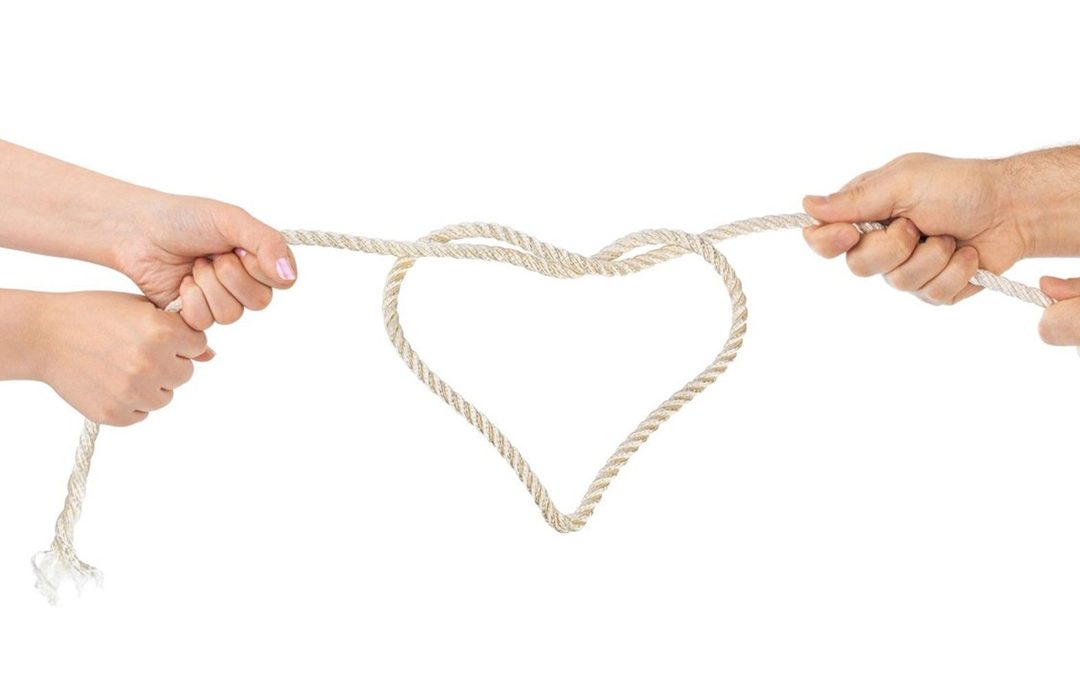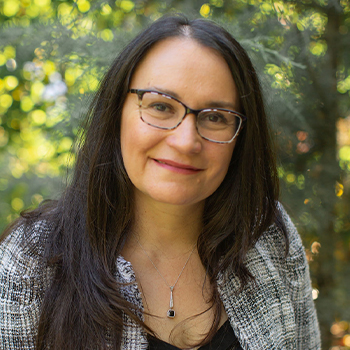Your Attachment Style: Where It Comes From, And How You Can Heal
Closeness, a sense of belonging, and intimacy are needs that we all share as humans. And since early childhood, our attachment styles have influenced our ability to meet those needs more than we may think. The relationship we had with our parents or primary caregivers in our childhoods becomes the blueprint for our future relationships.
The amount of comfort, care, and sense of safety we experienced from our parents/caregivers determines what our primary attachment style will be. Our adult romantic relationships can also impact our attachment style.
Today, experts typically recognize four main attachment styles, including:
- Secure
- Anxious or ambivalent
- Avoidant
- Disorganized
This article explores the different attachment styles, how they influence your relationships, and how to heal attachment wounds.

Secure attachment: Partners work on the relationships and repair ruptures
SECURE ATTACHMENT
Secure attachment is form when parents/caregivers have the capacity to self-regulate and to attune (mirror emotions) to their child’s emotions. When we are young, we do not have the capacity to regulate our nervous system on our own. We need our parents/caregivers to co-regulate with us. In other words, parents are capable to stay grounded when their child is crying, cranky, or fussy and that helps the child feel safe while experiencing those emotions.
Moreover, in secure attachment, parents/caregivers have the capacity to repair the relationship when there is a rupture. If parent becomes agitated, shouts, or gets angry, they have the capacity to apologize and make the child feel safe again
As adults, a secure attachment provides an ability to form healthy relationships. With it, we experience an embodied sense of safety when we are close to our partners and when we are apart. The relationship feels secure, even during times of conflict.
Unlike other attachment styles, someone with a secure attachment can emotionally understand that the relationship isn’t necessarily over after an argument.
A SECURE ATTACHMENT CAN ALSO PRESENT AS:
- Good sense of self
- Being capable of sharing feelings with friends and romantic partners
- Seek out social support in times of stress
- Have trusting, lasting relationships

Anxious Attachment: Fights and ruptures feel as if the relationship is over
ANXIOUS OR AMBIVALENT ATTACHMENT
Anxious attachment style is form when parents couldn’t regulate and attune to their children consistently. Their responsiveness was “on again and off again” without reliability. In anxious attachment, children don’t feel confident about their parents meeting their needs or if they will get enough love, there is love, but not consistent. In many cases, parents may have unresolved trauma or anxiety themselves.
Children, from a very young age, adapt to this environment by taking care of their parents/caregiver emotions. They make sure the other person is regulated by shutting down their own and making sure the other person “feels good.” Because there was no consistent co-regulation with parents/caregivers, children did not learn to self-regulate and feel unsafe when alone.
Adults who experience anxious attachment style have an embodied experience of uncertainty or fear in relationships.
Ruptures, disagreements, and fights feel dangerous, and we’ll do whatever it takes to get the connection back. Ex. Trying to solve any argument right away, pursuing the other, texting or calling our partners until we get an answer.
ANXIOUS ATTACHMENT CAN ALSO LOOK LIKE:
- Yearning for something or someone that you never seem to have
- Fixating on other people and losing themselves in relationships
- Difficulty saying no and setting healthy boundaries
- Over-functioning, over-accommodating, over-explaining, or apologize for no reason
- Second-guessing yourself or lack confidence in your words or actions
- Difficulty being alone, if alone you feel hurt, abandon, or angry
- Feel that you can easily attune to others’ feelings, wants, and needs
- Deep yearning for connection yet feel afraid of losing whatever relationship you’re in (will it be consistent?)
- Feel you need others to calm you down, and do you find it difficult to self-soothe
- Give more love than what you receive, but unsure how to handle it.
- People get labeled as “needy” or “too much”

Avoidant Attachment: We want to disconnect. We are afraid of closeness
AVOIDANT ATTACHMENT
Avoidant attachment comes from an environment when parents/caregivers were neglectful, unavailable, or even dangerous (physically and/or emotionally). Parents were rejecting, hostile, and they were only present when teaching a task. When child was in distress there was nobody to help him/her.
Children adapt to this environment by numbing, disconnecting, or dissociating from their emotions and needs. We learned that asking for help or expressing our needs made our parents upset, or we might been ridiculed, or ignored. Therefore, we learned to do things on our own.
Adults who experience avoidant attachment have an embodied experience of disconnection from self and others. They tend to minimize their own and others’ emotions. Arguments, or conflict are avoided and feels safer to solve them on our own. People with avoidant attachment are typically labeled as dismissive and insensitive.
AVOIDANT ATTACHMENT CAN ALSO PRESENT IN ADULTS AS:
- Preferring to do things on your own
- Minimizing the importance of close relationships in your life
- Difficulty reaching out for help, self-reliance
- Prefer relationships with material items or animals rather than people
- Unwilling or unable to express feelings with others
- Avoid intimacy or anxiety in connecting with others
- Feel there is a perfect someone out there who you have not met yet
- Difficulty supporting their partners during stressful times
- Find themselves feeling superior for no needing help from other people =. Whishing other people were more self-sufficient
- Inexplicable relief when partner is not close and inexplicable stressed when partner is near

Disorganized Attachment: •Combination of extreme experiences in both avoidant and anxious. Feels afraid, confused.
DISORGANIZED ATTACHMENT
Disorganized attachment comes from an environment where parents/caregivers were source of danger (either parent is frightened or frightening) and sometimes a source of safety and love. Parents sent their children double-binding messages that confused them. Example is holding their child and then asking them abruptly to go away.
Disorganized attachment style is a combination of extreme experiences in both avoidant and anxious. Children that grew up in this environment want to connect with parents but get overload with fear.
Children adapt to this environment by shutting down and freeze (a lot of energy in the body, but unable to move). They learned to that is safer not to resolve problems as they can’t satisfied their parents/caregivers.
Adults who experience this attachment style have an embodied experience of confusion, disconnection, and or extreme fear in relationships. They tend to be labeled as sending mixed messages and being all over the place.
DISORGANIZED ATTACHMENT CAN SOMETIMES PRESENT IN ADULTS AS:
- Seeing people as dangerous or unpredictable
- Thriving in chaotic relationships, stability feels boring
- Overly controlling towards partners
- Expecting the worst to happen
- Difficult feeling safe with their partners
- Disconnection, disassociation, confusing
- Difficulty remembering or talking about feelings regarding previous relationships
- They want to get close to people, but then push them away
HOW TO HEAL YOUR ATTACHMENT STYLE
We are all born with the capacity for secure attachment, we are hardwired for it. However, those of us who have had less-than-perfect childhoods and/or difficult family dynamics growing up had to adapt to our environments. Inconsistent and/or challenging early relationships, even if subtle, create attachment wounds that can lead to difficulties in our relationships as adults.
The first step to heal is to identify your relationship patterns; behaviors that happen over and over again in your relationships.
These patterns do not always show up immediately, it takes about six months to one year after we start a new relationship. The purpose of identifying your patterns is to understand what protective mechanisms and attachment wounds are getting trigger. With that knowledge, you can create awareness and start to understand why you behave the way you do.
Most of these protective patterns and attachment wounds are implicit as they are form early in our childhood and we do not have a narrative attached to them. Remember, that your primary attachment style is not fixed, you can change it!
ATTACHMENT EMDR
AF-EMDR, (Attachment Focus Eye Movement Desensitization and Reprocessing) is a treatment intervention typically known for healing from traumatic life experiences. It can also help people heal early attachment wounds and relational trauma.
I specialize in AF- EMDR and I can help you:
- Explore struggles in your relationships
- Identify protective mechanisms that are causing you problems.
- Identify and process emotions, beliefs, sensations, and behaviors that surface due to attachment wounds.
- Heal the attachment wound so you can feel more connected and in control in your relationships.
Over time, you’ll add and deepen your ability to regulate and positively improve your relationships. If you want to know if AF-EMDR is the right choice for you, call me for your 20-minutes free consultation. 805-430-4277
Sources:
Healing your attachment wounds, by Diane Poole Heller
Polyvagal Informed Therapy, Deb Dana
https://www.verywellmind.com/attachment-styles
https://www.psychologytoday.com/us/basics/attachment
https://www.sciencedirect.com/topics/psychology/ambivalent-attachment
https://www.attachmentproject.com/blog/avoidant-attachment-style/


